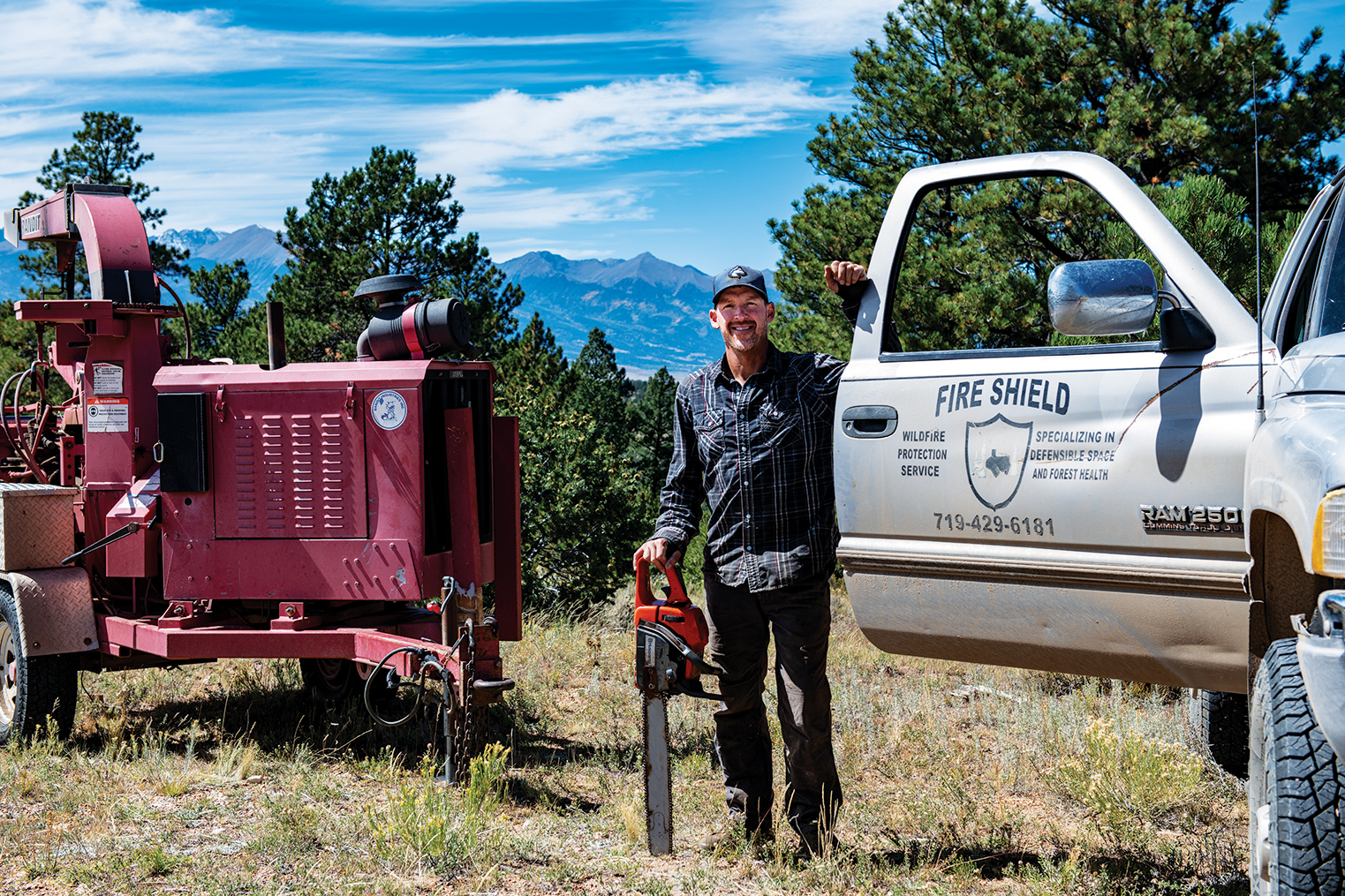This past summer and spring was one of the wettest in recent memory for the region. It all started when feet of heavy, wet snow fell on May 15, knocking out power throughout the region. While the storm was not ideal for linemen, the excess moisture was significant for local vegetation. With warm temperatures and ample rain over most of the summer, the fuel loads increased dramatically with abundant grass, shrubs, and new tree growth.
Now, as the dry autumn months set in, many local experts are looking at the increased fuel loads and worry about how easy it is for a spark to start a massive fire. Historically, some of the worst fires in the area began in the fall. For example, the Junkins Park fire in eastern Custer County sparked on October 17, 2016, when high winds blew a metal shed into a power line. The resulting inferno burned nine homes and 18,403 acres over two weeks. The only positive aspect of the fire was that the fire moved so fast that it quickly entered the San Isabel National Forest, where no additional homes were located.
Fire mitigation is a phrase often bandied about over the past few years, with leaders seemingly looking for a “silver bullet” that will solve the increasing forest fire dangers and the corresponding rising home insurance costs. While no such miracle policy tweak is likely to solve fire mitigation, local homeowners have increasingly been taking matters into their own hands and working at creating defensible fire spaces by partnering with local companies.
Casey Christensen, owner of Fire Shield, has been providing wildfire mitigation and defensible spaces around homes for the past two decades, and he discussed some of his observations of mitigation with the Tribune.
“The hardest conversation to have with homeowners about fire mitigation is that many people move to the forests to have trees close to their homes. The Baby Boomer and following generations kinda grew up not wanting to cut any trees; they just loved living in the middle of the forest. But now, as the risk of fire keeps growing, and tree diseases have been spreading, homeowners are starting to come around and say, ‘yeah, that has got to go.’”
The nice thing about Fire Shield is the personal attention Christensen can give to each property owner, taking the time to understand the situation. “One of the things I do is walk around with the homeowners, talking about the trees on the property and around the house, and it starts to filter through that there is a way to clean up the fire dangers closest to the homes. I never force anyone to cut down a tree; if they want that tree, we will work around it and limb it to make it as safe as possible. Often we try to limb the tree up above the roof line if the tree is tall enough if it is that close to the home.”
This small personal scale of Fire Shield is what makes the company so popular with homeowners. Here is what the typical mediation process looks like. “It all depends on the property. But if it is a typical slight slope with Piñon and Juniper, we come in with a 100-foot radius around the house if possible and then work outwards from there with the landowners. Often, we are hired because an insurance company has set some conditions for the renewal of an insurance policy on the house, so we take those insurance guidelines into consideration as well.”
Sometimes fire mitigation also means mowing around the home. “We recently did a job this summer around Cody Park where the insurance company required us to cut little brushes around trees that had regrown near trees that had already been cleared up. Really, you need to make sure that the grass is mowed if you don’t have livestock eating it. Plus, you need to make sure you limb-up trees on a regular basis especially when you have a good wet year like we did this season, and those limbs just keep growing, growing, and growing. You still have to think about thinning each year; otherwise, the fuel load will grow too much.”
For more information about creating defensible spaces around the home this year, contact Fire Shield by calling 719-429-6181.
-Jordan Hedberg
Caption on Featured Image: Fire Shield Owner Casey Christensen poses for a photo during a recent fire mitigation project on the Schultz Ranch in the Wet Mountains of central Custer County.
(This article was originally published in October, 2024. Subscribe to the print edition of the Tribune so you never miss out on timely news that impacts you!)

